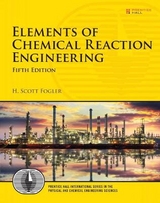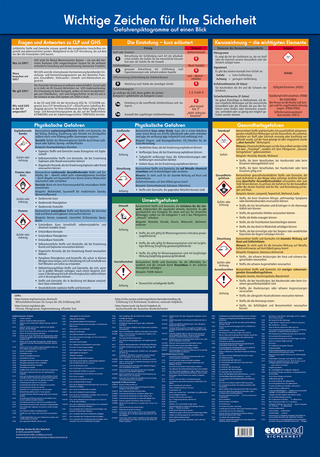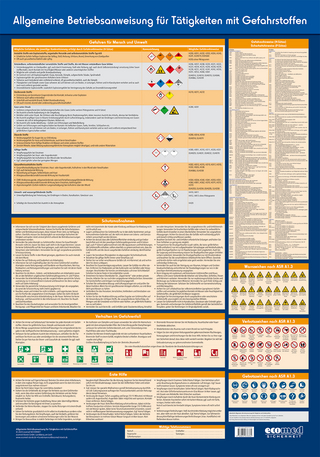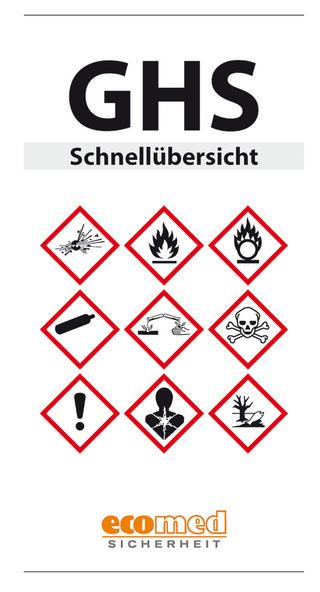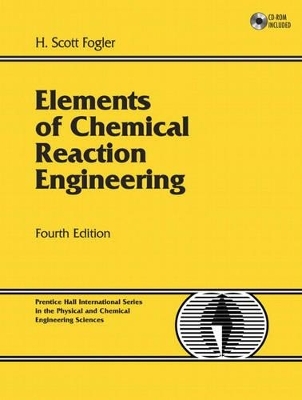
Elements of Chemical Reaction Engineering
Prentice Hall
978-0-13-047394-3 (ISBN)
- Titel erscheint in neuer Auflage
- Artikel merken
The Definitive, Fully Updated Guide to Solving Real-World Chemical Reaction Engineering Problems
The fourth edition of Elements of Chemical Reaction Engineering is a completely revised version of the worldwide best-selling book. It combines authoritative coverage of the principles of chemical reaction engineering with an unsurpassed focus on critical thinking and creative problem solving, employing open-ended questions and stressing the Socratic method. Clear and superbly organized, it integrates text, visuals, and computer simulations to help readers solve even the most challenging problems through reasoning, rather than by memorizing equations.
Thorough coverage of the fundamentals of chemical reaction engineering forms the backbone of this trusted text. To enhance the transfer of core skills to real-life settings, three styles of problems are included for each subject
Straightforward problems that reinforce the material
Problems that allow students to explore the issues and look for optimum solutions
Open-ended problems that encourage students to practice creative problem-solving skills
H. Scott Fogler has updated his classic text to provide even more coverage of bioreactions, industrial chemistry with real reactors and reactions, and an even broader range of applications, along with the newest digital techniques, such as FEMLAB. The fourth edition of Elements of Chemical Reaction Engineering contains wide-ranging examples—from smog to blood clotting, ethylene oxide production to tissue engineering, antifreeze to cobra bites, and computer chip manufacturing to chemical plant safety.
About the CD-ROMThe CD-ROM offers numerous enrichment opportunities for both students and instructors, including the following Learning Resources:
Summary Notes: Chapter-specific interactive material to address the different learning styles in the Felder/Solomon learning-style index
Learning Resources: Web modules, reactor lab modules, interactive computer modules, solved problems, and problem-solving heuristics
Living Example Problems: More than fifty-five interactive simulations in POLYMATH software, which allow students to explore the examples and ask “what-if” questions
Professional Reference Shelf: Advanced content, ranging from collision and transition state theory to aerosol reactors, DFT, runaway reactions, and pharmacokinetics
Additional Study Materials: Extra homework problems, course syllabi, and Web links to related material
Latest Software to Solve “Digital Age” Problems: FEMLAB to solve PDEs for the axial and radial concentration and temperature profiles, and Polymath to do regression, solve nonlinear equations, and solve single and coupled ODEs
Throughout the book, icons help readers link concepts and procedures to the material on the CD-ROM for fully integrated learning and reference.
H. Scott Fogler is the Arthur F. Thurnau Professor, Vennema Professor of Chemical Engineering at the University of Michigan. His research interests include flow and reaction in porous media, fused chemical relations, gellation kinetics, and chemical reaction engineering problems in the petroleum industry. He has graduated 37 Ph.D. students and has more than 200 refereed publications in these areas. Fogler is the AIChE 2008 President-elect. He has chaired ASEE’s Chemical Engineering Division, served as director of the American Institute of Chemical Engineers, earned the Warren K. Lewis Award from AIChE for contributions to chemical engineering education, and received the Chemical Manufacturers Association’s National Catalyst Award. He is the co-author of the bestselling textbook Strategies for Creative Problem Solving, Second Edition (Prentice Hall, 2008).
1. Mole Balances.
The Rate of Reaction
The General Mole Balance Equation
Batch Reactors
Continuous-Flow Reactors
Industrial Reactors
Summary
CD-ROM Material
Questions and Problems
Supplementary Reading
2. Conversion and Reactor Sizing.
Definition of Conversion
Batch Reactor Design Equations
Design Equations for Flow Reactors
Applications of the Design Equations for Continuous-Flow Reactors
Reactors in Series
Some Further Definitions
Summary
CD-ROM Materials
Questions and Problems
Supplementary Reading
3. Rate Laws and Stoichiometry.
Part 1. Rate Laws
Basic Definitions
The Reaction Order and the Rate Law
The Reaction Rate Constant
Present Status of Our Approach to Reactor Sizing and Design
Part 2. Stoichiometry
Batch Systems
Flow Systems
Summary
CD-ROM Material
Questions and Problems
Supplementary Reading
4. Isothermal Reactor Design.
Part 1. Mole Balances in Terms of Conversion
Design Structure for Isothermal Reactors
Scale-Up of Liquid-Phase Batch Reactor Data to the Design of a CSTR
Design of Continuous Stirred Tank Reactors (CSTRs)
Tubular Reactors
Pressure Drop in Reactors
Synthesizing the Design of a Chemical Plant
Part 2. Mole Balances Written in Terms of Concentration and Molar Flow Rate
Mole Balances on CSTRs, PFRs, PBRs, and Batch Reactors
Microreactors
Membrane Reactors
Unsteady-State Operation of Stirred Reactors
The Practical Side
Summary
ODE Solver Algorithm
CD-ROM Material
Questions and Problems
Some Thoughts on Critiquing What You read
Journal Critique Problems
Supplementary Reading
5. Collection and Analysis of Rate Data.
The Algorithm for Data Analysis
Batch Reactor Data
Method of Initial Rates
Method of Half-Lives
Differential Reactors
Experimental Planning
Evaluation of Laboratory Reactors
Summary
CD-ROM Material
Questions and Problems
Journal Critique Problems
Supplementary Reading
6. Multiple Reactions.
Definitions
Parallel Reactions
Maximizing the Desired Product in Series Reactions
Algorithm for Solution of Complex Reactions
Multiple Reactions in a PFR/PBR
Multiple Reactions in a CSTR
Membrane Reactors to Improve Selectivity in Multiple Reactions
Complex Reactions of Ammonia Oxidation
Sorting It All Out
The Fun Part
Summary
CD-ROM Material
Questions and Problems
Journal Critique Problems
Supplementary Reading
7. Reaction Mechanisms, Pathways, Bioreactions, and Bioreactors.
Active Intermediates and Nonelementary Rate Laws
Enzymatic Reaction Fundamentals
Inhibition of Enzyme Reactions
Bioreactors
Physiologically Based Pharmacokinetic (PBPK) Models
Summary
CD-ROM Material
Questions and Problems
Journal Critique Problems
Supplementary Reading
8. Steady-State Nonisothermal Reactor Design.
Rationale
The Energy Balance
Adiabatic Operation
Steady-State Tubular Reactor with Heat Exchange
Equilibrium Conversion
CSTR with Heat Effects
Multiple Steady States
Nonisothermal Multiple Chemical Reactions
Radial and Axial Variations in a Tubular Reactor
The Practical Side
Summary
CD-ROM Material
Questions and Problems
Journal Critique Problems
Supplementary Reading
9. Unsteady-State Nonisothermal Reactor Design.
The Unsteady-State Energy Balance
Energy Balance on Batch Reactors
Semibatch Reactors with a Heat Exchanger
Unsteady Operation of a CSTR
Nonisothermal Multiple Reactions
Unsteady Operation of Plug-Flow Reactors
Summary
CD-ROM Material
Questions and Problems
Supplementary Reading
10. Catalysis and Catalytic Reactors.
Catalysts
Steps in a Catalytic Reaction
Synthesizing a Rate Law, Mechanism, and Rate-Limiting Step
Heterogeneous Data Analysis for Reactor Design
Reaction Engineering in Microelectronic Fabrication
Model Discrimination
Catalyst Deactivation
Summary
ODE Solver Algorithm
CD-ROM Material
Questions and Problems
Journal Critique Problems
Supplementary Reading
11. External Diffusion Effects on Heterogeneous Reactions.
Diffusion Fundamentals
Binary Diffusion
External Resistance to Mass Transfer
What If . . . ? (Parameter Sensitivity)
The Shrinking Core Model
Summary
CD-ROM Material
Questions and Problems
Supplementary Reading
12. Diffusion and Reaction.
Diffusion and Reaction in Spherical Catalyst Pellets
Internal Effectiveness Factor
Falsified Kinetics
Overall Effectiveness Factor
Estimation of Diffusion- and Reaction-Limited Regimes
Mass Transfer and Reaction in a Packed Bed
Determination of Limiting Situations from Reaction Data
Multiphase Reactors
Fluidized Bed Reactors
Chemical Vapor Deposition (CVD)
Summary
CD-ROM Material
Questions and Problems
Journal Article Problems
Journal Critique Problems
Supplementary Reading
13. Distributions of Residence Times for Chemical Reactors.
General Characteristics
Part 1. Characteristics and Diagnostics
Measurement of the RTD
Characteristics of the RTD
RTD in Ideal Reactors
Diagnostics and Troubleshooting
Part 2. Predicting Conversion and Exit Concentration
Reactor Modeling Using the RTD
Zero-Parameter Models
Using Software Packages
RTD and Multiple Reactions
Summary
CD-ROM Material
Questions and Problems
Supplementary Reading
14. Models for Nonideal Reactors.
Some Guidelines
Tanks-in-Series (T-I-S) Model
Dispersion Model
Flow, Reaction, and Dispersion
Tanks-in-Series Model Versus Dispersion Model
Numerical Solutions to Flows with Dispersion and Reaction
Two-Parameter Models-Modeling Real Reactors with Combinations of Ideal Reactors
Use of Software Packages to Determine the Model Parameters
Other Models of Nonideal Reactors Using CSTRs and PFRs
Applications to Pharmacokinetic Modeling
Summary
CD-ROM Material
Questions and Problems
Supplementary Reading
Appendix A: Numerical Techniques.
Appendix B: Ideal Gas Constant and Conversion Factors.
Appendix C: Thermodynamic Relationships Involving the Equilibrium Constant.
Appendix D: Measurement of Slopes on Semilog Paper.
Appendix E: Software Packages.
Appendix F: Nomenclature.
Appendix G: Rate Law Data.
Appendix H: Open-Ended Problems.
Appendix I: How to Use the CD-ROM.
Appendix J: Use of Computational Chemistry Software Packages.
Index.
About the CD-ROM.
| Erscheint lt. Verlag | 4.10.2005 |
|---|---|
| Verlagsort | Upper Saddle River |
| Sprache | englisch |
| Maße | 178 x 235 mm |
| Gewicht | 1810 g |
| Themenwelt | Naturwissenschaften ► Chemie ► Technische Chemie |
| Technik | |
| ISBN-10 | 0-13-047394-4 / 0130473944 |
| ISBN-13 | 978-0-13-047394-3 / 9780130473943 |
| Zustand | Neuware |
| Haben Sie eine Frage zum Produkt? |
aus dem Bereich
